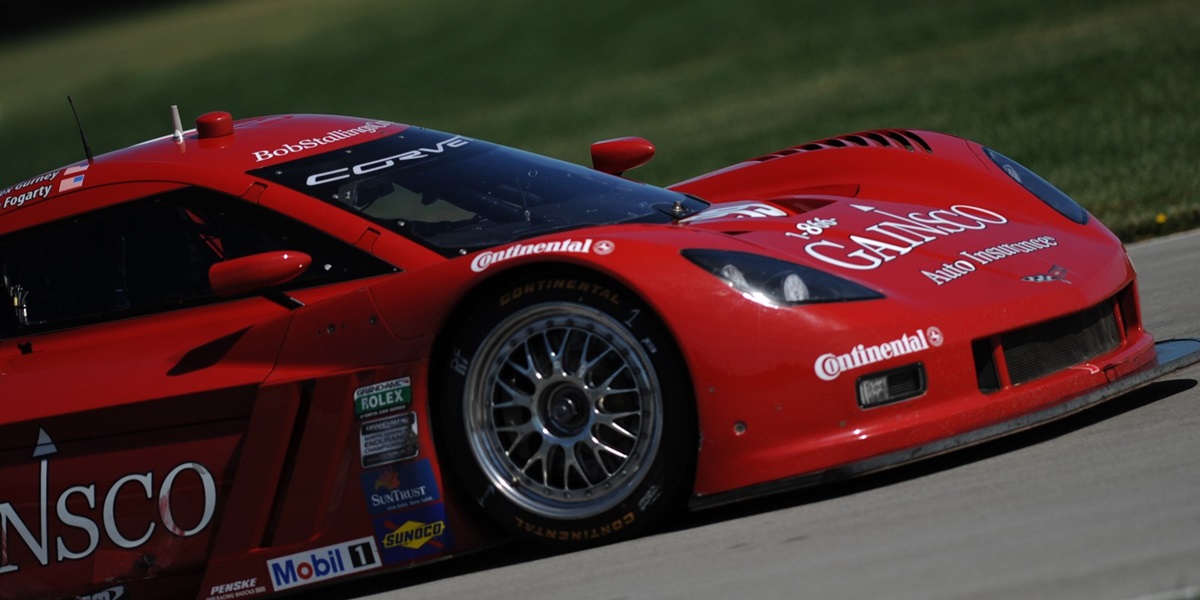
GRAND-AM 101: The Daytona Prototype Class
June 14, 2012 | By GRAND-AM MEDIA
The GRAND-AM Daytona Prototype category has attracted the attention of superstar drivers and universally recognized teams through its extremely raceable and relatively affordable format. With its
intelligent design, the class has revolutionized sports car racing with plentiful battles at the front of
the field and close finishes in virtually every race.
The DPs compete in the premier class of the GRAND-AM Rolex Sports Car Series. These are exotic, mid-engine machines that are purpose-built for competition. They are low to the ground and are
capable of speeds in excess of 185 mph. They also feature the latest in safety technology, including carbon-fiber side-impact panels and a multi-point roll cage with a unique center post at mid-windshield.
The rules were designed by GRAND-AM with the intention of containing costs while promoting close competition and driver safety. The class was introduced on the eve of the 2002 Rolex 24 At Daytona, and debuted at that event one year later. Chassis constructors Fabcar, Multimatic, Doran and Picchio fielded DPs in the inaugural 2003 season, with Riley, Crawford and Chase introducing models the following year.
After five years with only minor rule changes, DP constructors were allowed to update their designs or transfer their licenses for the 2008 season, ensuring the stability of the class. Lola (which purchased the Multimatic franchise), Dallara (Doran) and Coyote (Fabcar) purchased existing licenses and debuted cars, while Riley and Crawford presented updated versions.
Rule changes for the 2011 season included the use of the Assisted Gearshift System (AGS or paddle shift) transmissions for cars piloted by a Pro-Am driver, and a change in the size of the specified sideplates on the rear wings.
The 2012 season will see the introduction of the next generation of Daytona Prototypes, with revisions including a smaller driver compartment and OEM-branded DPs, such as the new Chevrolet Corvette Daytona Prototype. GRAND-AM is also studying engine packages with the possible introduction of turbocharged engines beginning with the 2013 season.
Although each chassis is designed and manufactured independently, competitor modifications are highly limited by GRANDAM rules. Certain parts, including series-standard rear wings, are mandated by the series. A DP chassis costs about $400,000, but the cars can be raced in their current configuration for several years within GRAND-AM’s stable rules package.
For instance, the original Riley chassis that debuted in 2004 continued to race competitively with updates in the Rolex Series – winning two races in 2008 – while Brumos Racing won two races in 2009 with the original version of the Riley chassis.
Manufacturers are welcome to submit any production-based engine for approval in the series. Engines that are approved for competition include power plants from Chevrolet (5-liter V-8), Lexus (5-liter V-8), BMW (5-liter V-8), Porsche (4-liter flat six and 5-liter V-8), Ford (5-liter V-8), Ferrari (4.5-liter V-6), Honda (3.8-liter V-6) and Infiniti (4.3-liter V-8). All engines are tuned to produce about 500 horsepower and each is capable of being mated to any of the approved DP chassis, which creates an interesting variety of chassis/engine combinations. DPs utilizing engines under 4.5 liters are allowed the advantage of the six-speed gearboxes, while all race cars with larger engines must run five speeds.
In addition to official and approved chassis designs and engines tuned to GRAND-AM specifications, DP competition is equalized further through minimum car weight. DPs with smaller engines can run at lighter minimum weights than their counterparts with more power. Cars fitted with engines less than 4 liters can weigh 2,200 pounds or more. DPs running engines 4 liters and up to the maximum 5 liters must weigh in at a minimum 2,250 pounds.
